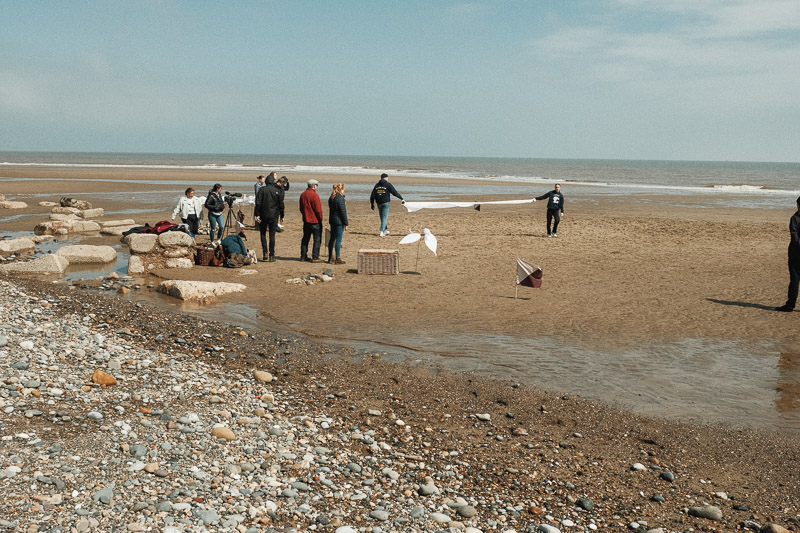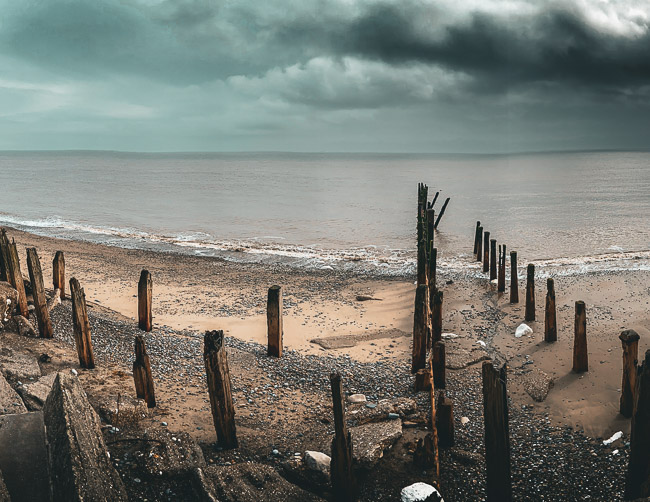We are thrilled to announce the return of Living Coast, our exhibition inspired by the South Holderness coastline and its resilient communities across time. This time, we bring the exhibition back to where it all began: Kilnsea—at Sue and Andrew Wells’ brick barn at Westmere Farm (June 19th to 24th). This location is not just a random venue; it’s a beating heart of the landscape and the people that shaped our work.
rural places are not just containers for human activity, they are actively produced through social practices and meanings
Westmere Farm, with its serene beauty and the Wells family’s deep-rooted connection to the land, offers a perfect setting for Living Coast. The barn, framed by the expansive horizon of arable land and the coast, reflects the spirit of this quiet corner of East Yorkshire, where nature and human life are intricately woven together. As Michael Woods tells us, ‘rural places are not just containers for human activity, they are actively produced through social practices and meanings’. This sentiment echoes in our work. Kilnsea, with its ever-changing coastline and its people, has always been an active participant in our creative process.
Our understanding of this landscape has been enriched by our engagement with its natural heritage. Just down the road from Westmere Farm, the Spurn Bird Observatory has been instrumental in deepening our connection to the area. Conversations and interviews with its dedicated staff and visitors have illuminated the delicate balance between human presence and the protection of bird species, offering a lens into the ecological significance of this coastal environment. As Carl Folke has said: ‘the littoral zone is a dynamic interface where human and natural systems interact in complex ways, challenging our notions of fixed boundaries’. Sea birds, with their ambitious migratory patterns but fixed points of return, are one obvious example of this – as Andrew Wells was reminded one morning this year when the first returning migratory swallow tapped on his kitchen window – to tell him that the barn door wasn’t open!
The cyclical nature of this place is mirrored in our exhibition’s themes, where the boundaries between land, sea, and memory are constantly in flux.
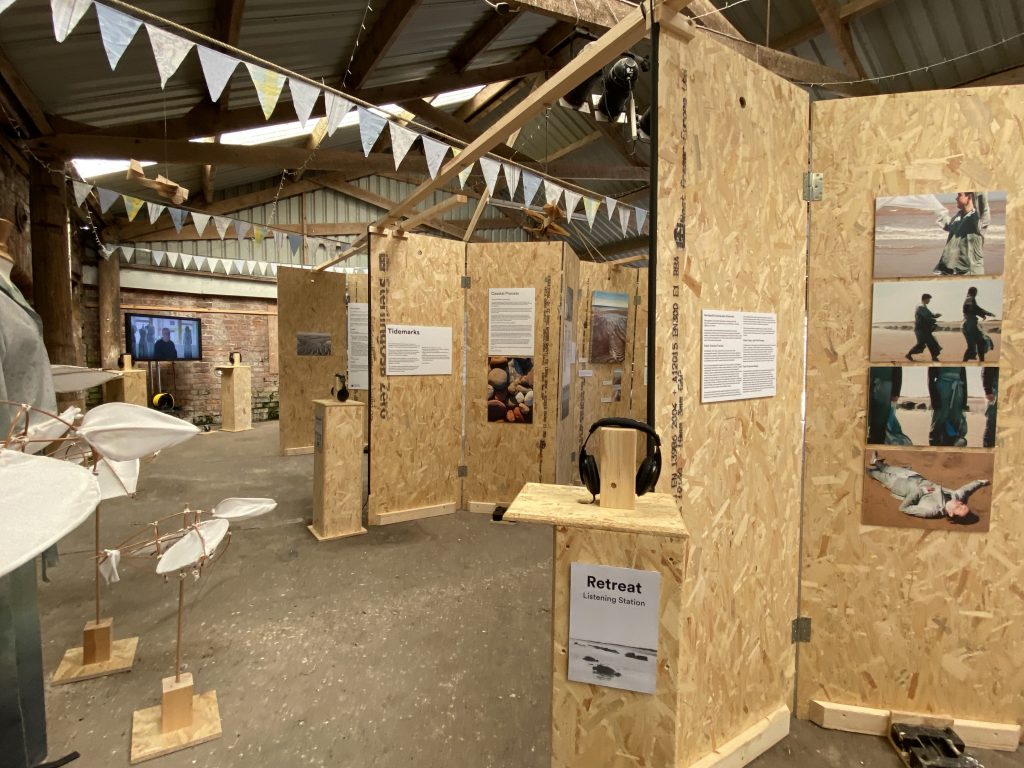
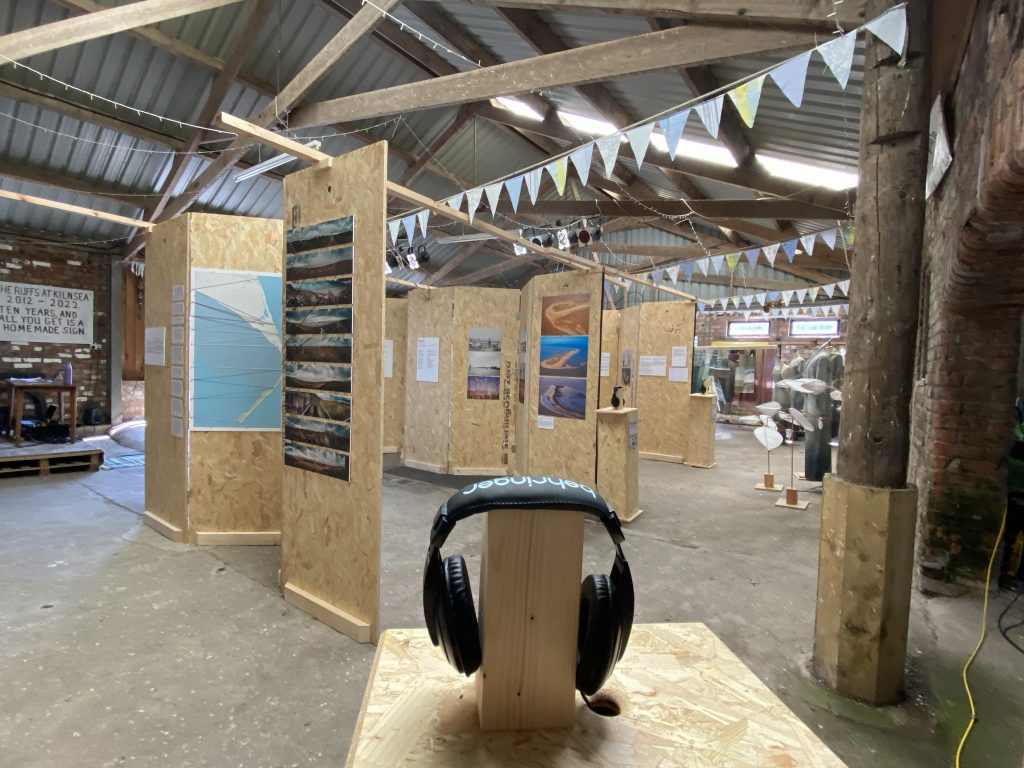
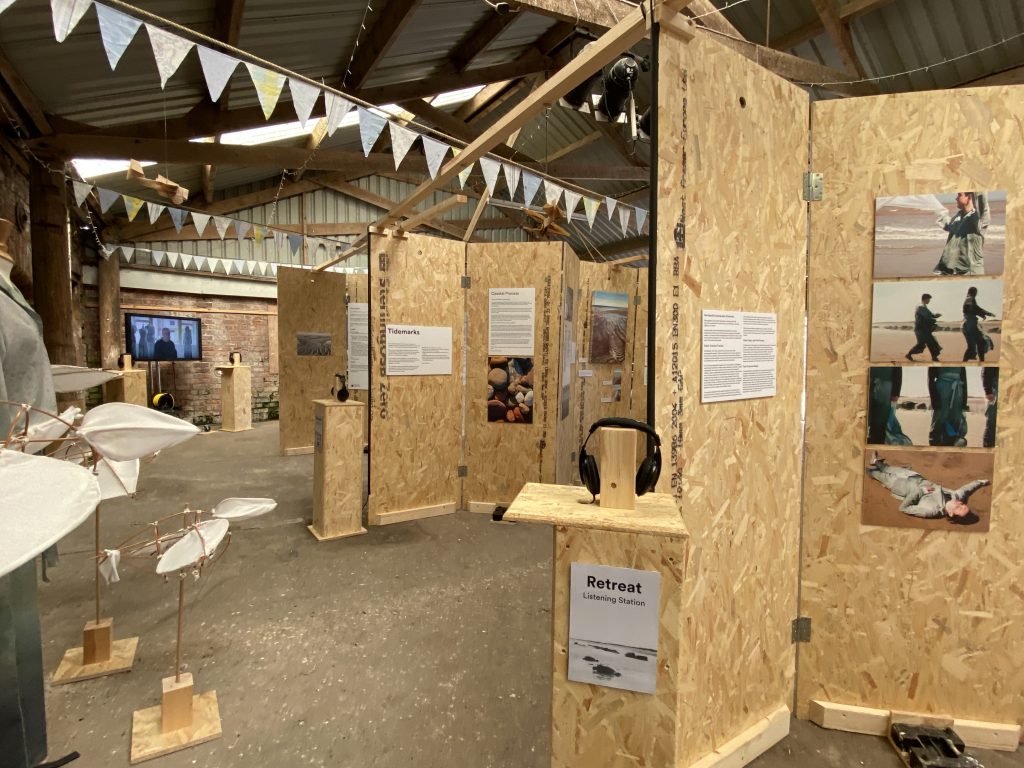

coastal communities are at the forefront of environmental change
Equally influential on our exhibition has been the work of the Yorkshire Wildlife Trust’s Spurn Discovery Centre. Through its exhibits and educational programs, we have gained a deeper appreciation for the unique ecosystems that thrive here, further informing the visual and thematic threads of Living Coast. As we now return to Westmere Farm, it feels like a homecoming—a celebration of the delicate relationship between land, community, and art. This homecoming is not just physical but on a deeper level it is symbolic of an unbreakable connection between the environment and the social and cultural fabric of Kilnsea – to borrow from W. Neil Adger’s reflections on coastal resilience, it is ‘the interplay between social and ecological systems that is fundamental to understanding resilience in coastal environments’.
We invite you to join us in this celebration, where the exhibition is hosted in a barn that will during our visit also be filled with circling swifts and sparrows – in a farm space that resonates with the landscape itself. It is good to be here. As Karen O’Brien has noted, ‘coastal communities are at the forefront of environmental change’ and through Living Coast, we aim to honour the intersection of adaptation and tradition that such communities and places represent in the modern world, as a reflection of Kilnsea’s own ongoing dialogue with its environment.
Living Coast is our way of celebrating a vibrant community, the shifting baselines of its littoral landscape, and the profound influence both have had on our creative journey. At Westmere Farm, where land meets the sea and past meets present, we invite you to witness this exploration of place, memory, and artistic expression in the very heart of the community that inspired it all.


